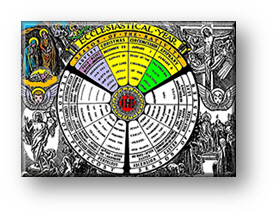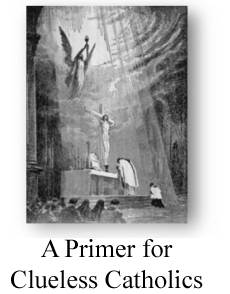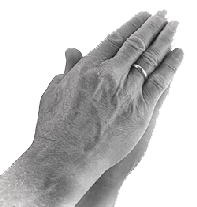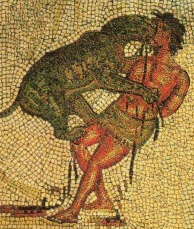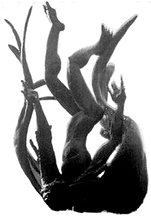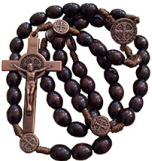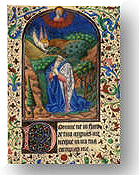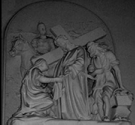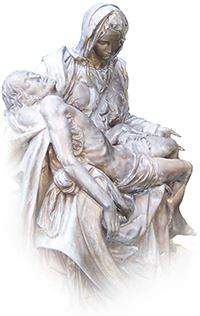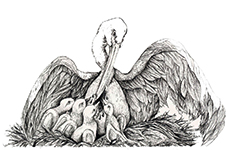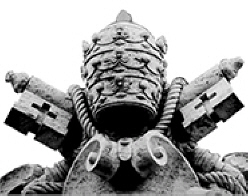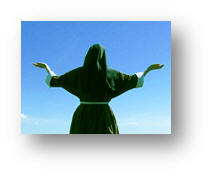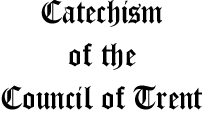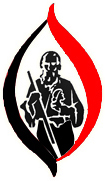|
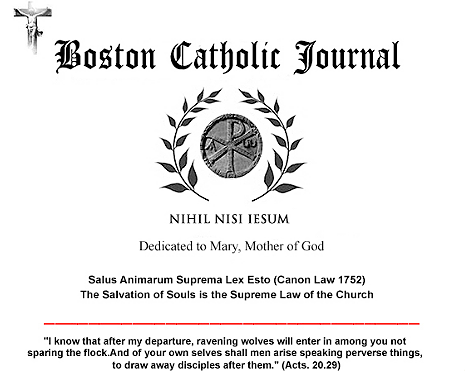
The Tortures and Torments
of the Christian Martyrs
from
De SS. Martyrum
Cruciatibus
(a Modern Edition)
Chapter X
Of yet other Instruments and Methods of
Torture for Afflicting Christian Martyrs such as:
-
Amputating Womens
Bosoms
-
Cutting out the Tongue
-
Lopping off Hands
and Feet
-
Pulling out the Teeth
-
Flaying Alive
-
Transfixing
-
Exposing to Wild Beasts
In
this chapter
we will consider still further methods of torture under which the Catholic
Martyrs suffered, beginning with the deliberate amputation of women's
breasts. This cruelty is found again and again in the Acts of
many female martyrs we find it, for example, in the Acts of
St. Euphemia, of Saints Dorothy, Thecla, and Erasma, three sisters,
of twelve Holy Matrons whose names are now forgotten, of St. Agatha
and others, and lastly of St. Helconis, whose sufferings are recorded
in the Greek Menology on May 28th, in these words:
"The anniversary of
the Blessed Martyr Helconis. She lived under the Emperor Gordian,
and came from the city Thessalia. Arrested and brought before Perennius,
the Governor of Corinth, she refused to sacrifice to idols, but
preaching Christ and none other, she was first bound by the feet
to an ox yoke, and laid in molten lead and boiling pitch, but escaped
unharmed. She was then shaven and her whole body drenched in fire.
Remaining unharmed once again, she went into the temple of idols,
and by her prayers threw down to the earth the images of Pallas,
Jupiter, and Aesculapius. But when Justinus succeeded Perennius
as Proconsul, her bosoms were cut off, and being brought before
the new Governor, she was cast into a furnace of blazing fire, but
the flames did not so much as touch her, although they burned up
and consumed many of the soldiers. Afterward she was stretched out
on a brass bedstead heated red-hot, but suddenly a company of Angels
stood round her, and saved the holy martyr from all harm. Next she
was exposed to wild beasts, which, while they did her no harm, yet
slew several of their keepers. Finally the Governor pronounced sentence,
which she most gratefully received; and so she was beheaded and
took her departure to heaven.
We now proceed to the
other methods of torture mentioned at the beginning of this chapter
those, specifically, through which the martyrs' teeth were pulled
out, or their tongues cut off, or their hands or feet, or both, amputated,
or lastly their legs broken.
Of Martyrs whose Teeth
were pulled out
This form of torture,
which needs, no further explanation, is found in the Acts of
the Holy Saints and Virgins, Apollonia, Anastasia, and Febronia.
Of Martyrs whose Tongue
was Cut Out
Christians who were subjected
to this kind of punishment are named in the Acts of many Martyrs
of either sex as of Saints Terentianus, Florentius, and Hilary, and
Saints Basilissa, Anastasia, and Agathoclia. The last named is commemorated
in the Menology on October 1st:
"Anniversary of the
Blessed Martyr Agathoclia, a slavewoman. She was the servant of
... a certain [pagan mistress] Paulina who seeing that Agathoclia
was a Christian and feared God, she was for ever striking her on
the head with sharp stones, and forced her to walk forth barefoot
to gather sticks in winter and frost, and for those entire eight
years strove to persuade Agathoclia to adore idols. But this she
utterly refused to do; so she was scourged, her tongue cut out,
and she cast into prison and there starved. Finally fire was poured
down her throat, and she exchanged this life for a better one.
The other two martyrs,
Saints Basilissa and Anastasia, are commemorated on April 15th as follows:
"Anniversary of Saints
Basilissa and Anastasia. These were natives of Rome, the capital,
ladies distinguished by birth and wealth, and disciples of the Holy
Apostles, and when these latter [the Apostles] were crowned with
martyrdom, they had their holy relics collected and moved by night.
For this they were denounced to the Emperor Nero, and were accordingly
thrown into prison, and presently, when they remained steadfast
in their profession of Christ, were brought forth again, and hung
up, then after breasts, hands, feet, and tongues had been cut away,
were finally beheaded.
Of Martyrs Whose Hands and Feet
were Lopped Off or their Legs Broken
These three methods of
torture employed upon Christians are witnessed to in the Acts
of St. Quirinus and thirty-seven other martyrs, of Saints Severus and
Memnon, of St. Charitina, virgin and martyr, of St. Galatio and his
wife, St. Hadrian and his companions, and of of forty Roman soldiers
whose holy martyrdom is recorded in the Martyrology on March
9th.
Of the Different Ways
in which the Blessed Martyrs Teeth were Pulled Out and their Tongues
and Breasts Cut Way
By the operation of the
divine power and goodness it sometimes came about that the martyrs,
after their tongue was cut out, yet uttered speech and spoke eloquently.
This is attested to in various Acts of the Blessed Martyrs; in
those cited above and in the records of the martyrdom of St. Anastasia.
As a rule the Holy Martyrs had tongues and breasts cut away, and teeth
pulled out, after they had first been bound to stakes set upright in
the ground. We learn this from the Acts of St. Febronia, virgin
and martyr, also mentioned earlier.
How the Blessed Martyrs
had their Feet Cut Off and their Legs Broken
The Christian martyrs'
hands and feet were amputated (as we find in the Acts of St.
Febronia, of St. Oceanus and his companions) in the following way: first,
the limb to be removed was placed on a block of timber or a stand of
wood; then the executioner would lift up his arm holding the axe, and
bringing this down with a crash, would strike away and lop off the part
to be dismembered.
Leg-breaking was effected as follows: an anvil was prepared together
with an iron bar; then the Christians condemned to death for their fidelity
to Christ, were ordered to put their shins upon the anvil, which the
inhuman executioner then smashed with heavy blows of the iron crowbar.
This is all described in the History of the martyrdom of St.
Hadrian, mentioned above.
This punishment, as likewise that
of breaking of the loins, is spoken
of among ancient writers,
such as Plautus in his Poenulus, where he says:
Ex syncrasto scrurifragium
fecit
("The wretch was a mere aggregation of mangled humanity before,
and now he had his legs broken into the bargain).
Also by Apuleius in his
Golden Ass:
"Then the noble wife,
praying to avert this dreadful doom and thinking with horror of
his legs being broken, hides away her husband, who is shuddering
and deathly pale with terror.
The
False Opinion held by Some Concerning the Punishment of Leg-Breaking
Some hold that the penalty
of leg-breaking was identical with that of breaking the legs of a criminal
after he was nailed to the cross. This, however, is mistaken,
for the practice of breaking the legs of persons crucified so that
they may die the more quickly, was in use only among the Jews, and was
not a practice followed by the Gentiles. The latter simply left the
bodies of crucified criminals hanging on the cross until they rotted
away. This is implied by Plautus, who in his Miles Gloriosus
has a slave say:
Noli minitari;
scio crucem futuram mihi; sepulcrum
("Don't keep on threatening; I know well enough the cross will
be my tomb at last)
And by Horace in his
Epistles:
Non hominem occidi; non pasces in cruce corvos
("I have not killed a man; you shall not feed the crows with
my flesh on the cross).
From this it is clear
that the Gentiles did not, like the Jews, remove from the gallows the
bodies of those they had crucified, but rather left them there to rot.
We now move on to discuss the remaining forms of torture first those
wherein sharp-pointed reeds were stuck under the finger-nails, between
these and the flesh of the fingers, or the martyrs flayed alive, or
impaled on a sharpened stake.
These tortures are described in several accounts of the deaths of the
Saints most notably in that of St. Bartholomew the Apostle, as well
as of St. Glyceria, a Roman virgin and martyr, of Saints Gregory the
Armenian, Galatio, Boniface, Benjamin the Deacon, and many others.
Of
Martyrs Pierced with Spits
Moreover the Blessed Christian
Martyrs were not only impaled with a sharpened stake, as just described,
but were sometimes transfixed with iron spits. This is stated distinctly
both in the History of the Martyrdom of St. Quirinus, and especially
by Sozomen, in his Ecclesiastical History:
"At Gaza the populace,
under the Emperor Julian the Apostate, virulently persecuted Eusebius,
Nestabus, and Zeno, who were Christians. They were arrested when
hiding in their houses, thrown into jail and beaten with scourges.
Soon all the people began to gather at the theatre and cried out
angrily against them, declaring that they had profaned their holy
images and had earlier conspired to destroy and insult the
religion of the Heathen. So by dint of shouting and mutually exciting
one another, they were lashed up into passionate anger and the fierce
desire to shed blood.
Thus egging each other
on, as is the way of the people when once roused into turbulence,
they rushed to the prison, and hauling them forth, dragged them
along, face down, face up, as it might happen. Presently dashing
them on the ground, and beating them with sticks and stones and
whatever weapons chance put in their hands, they cruelly put them
to death. I have heard, too, that the women, coming out of the weaving
sheds, stabbed them with their pointed spindles, and the cooks in
the market-place snatched caldrons of boiling water from their fires
and dashed the contents over them, while others pierced them with
their spits. Then when they had mangled their bodies and so broken
their heads that the brains poured out on the ground, they convey
them to a spot outside the city where dead carrion was wont to be
thrown away.
More than enough has now
been said of the impaling of the martyrs with sharpened stakes, transfixing
them with spits, and similar horrors.
We must now address to finish the list of tortures enumerated at the
beginning of Chapter 9 the ways in which the Martyrs were flayed alive,
and then concerning the Catholic sufferers of our own day, under whose
fingernails needles are stuck by their Heretic persecutors.
Martyrs, in full possession of their consciousness and all their senses,
often had the skin of their whole body flayed off, or sometimes that
of some part only: the back, the face, or head to which lighted coals
were then sometimes applied.
Now concerning the torture of Catholic believers by Heretics by means
of needles driven under the finger-nails, the author of the Anglican
Controversy, thus writes of the case of Alexander Briant:
"When Briant had spent
two days in the Tower, he was summoned before them by the Governor
of the Fortress and Doctors Hammond and Norton, who cross-examined
him in their customary fashion, proposing an oath to him to compel
him to answer all the charges brought against him. And when he would
not reveal those who supported him, or where he had performed the
Mass, or whose confessions he had heard, they ordered needles to
be stuck under his finger-nails. Despite this cruelty, he cheerfully
repeated the Psalm, Miserere mei, Deus (Have mercy upon me,
O God), and earnestly asked God to pardon his tormentors.
But to proceed now to
yet other methods of torture, by which, as we have said already, martyrs
were thrown down headlong from high places. That they were so treated,
is amply attested to in many of the Acts of martyrs, as, for
instance, we find in the Acts of St. Clement of Ancyra and of
St. Felicitas and her sons. Tacitus, the Historian, writes how one Lucius
Pithuanius, a magician, was cast down from the Tarpeian rock, while
Apuleius, in the Discourse by which he defends himself against the charge
of sorcery, says:
"A wondrous fabrication,
a cunning falsehood deserving of the jail and the dungeon.
Now the Dungeon and the
Tarpeian Rock were both of them names of the place [the Capitoline Hill]
at Rome from which criminals were hurled down a steep cliff to their
death. Since it is plain that magicians or sorcerers were thrown down
from this cliff, there is little doubt that Christians also believed
to be sorcerers by the Heathen were subjected to the same form of
punishment, and so won for themselves the blessed crown of martyrdom.
Of
Martyrs Who were Torn in Different Ways or Exposed to Wild Beasts of
Different Kinds
Witness to this form of
torture and execution of Christ's most blessed martyrs is extensively
provided in the Histories of many Saints, as for instance in
those of Saints Philemon and Apollonius, St. Thyrsus and his companions,
St. Mark the Evangelist (Roman Martyrology, on April 25th), and
St. Onesiphorus, a disciple of the Holy Apostles, St. Martiana, virgin
and martyr, and an host of Saints and Martyrs who won their crown under
the Emperor Nero.
The
Manner in which the Martyrs were Dragged Around and Torn
Sometimes Martyrs were
dragged over rough and stony places, or ground sown with brambles and
thistles, tied to the necks or tails of wild horses by ropes looped
and fastened round their ankles. In our own day, Catholics were pitifully
dragged through cities by the Heretics, as we find in the Theatre
of Heretic Cruelties, Sanders' Anglican Schism, and in the
work already cited On the Anglican Persecution. In the Theatre
of Cruelties, for example, you will read how a venerable Catholic
widow, sixty years of age, at the city of Embrun, was, because of her
Faith, bound by the hair of her head to a log of wood, and cruelly dragged
through the streets.
Of
Martyrs Condemned to the Wild Beasts
Furthermore, it was customary
in antiquity to condemn criminals and later, Christians to
the wild beasts. This punishment is mentioned by Asinius Pollio, Aulus
Gellius, Apuleius, Athenreus, and Josephus, as well as in many other
Acts of the B1essed Martyrs. It is also described in Suetonius'
Life of Domitian, where he explains that the martyrs were exposed,
not only to lions, but sometimes to dogs as well, although lions were
more commonly used. We learn of this not only from the story of Androcles
related by Aelian, and the History of the Holy Martyr, St. Ignatius,
as it occurs in Eusebius' Ecclesiastical History and in St. Jerome,
but also from the common cry that the Roman population used to raise
against the Christians. Tertullian again and again affirms how the Roman
mob was forever crying,
"The Christians to
the lions, the Christians to the lions!" "If the Tiber," he writes,
"overflows the walls, if the Nile does not overflow the fields,
if the sky has stood still, or the earth trembled, if famine or
pestilence has befallen, instantly is the cry raised, 'The Christians
to the lions!' " And in another place: "For fear there be none left
to shout, 'The Christians to the wild beasts!' "
That Christians were often
cast to these kinds of animals as well as to others to be devoured and
torn in pieces is shown in their own Histories, and not only
by Tertullian. This is not surprising, for we find in Roman law that
this punishment was deemed proper for slaves. Since it was usually inflicted
only upon slaves and those esteemed less than slaves, it would then
be considered a suitable punishment for Christ's faithful servants who
were deemed no better than slaves, and worse still among the Heathen.
It is, then, no cause for wonder if they were frequently found exposed
to beasts.
As we have seen in virtually every other form of torture that we have
examined thus far, this being exposed to wild beasts was not always
accomplished in one and the same way. Sometimes the martyrs were stripped
naked and shut up in the midst of theatres or other places where they
were imprisoned; sometimes were they bound to stakes, wrapped in nets,
or clothed in the skins of beasts, and so given to the lions; sometimes
their feet were fixed in hollowed stones by means of molten lead, and
they were enclosed in a confined space and delivered over to be savaged
by dogs. We find the following in the Acts of the Holy Martyr,
St. Benignus:
"Angered by these
words, the most wicked Emperor commanded him to be shut up in prison,
and a great stone with a hole through it to be brought, into which
his feet were fixed with molten lead. Red-hot awls were then stuck
lengthwise into his fingers under the nails, and for six days he
was allowed neither food nor drink. What is more, twelve very savage
dogs were imprisoned along with him, maddened with hunger and thirst,
to the end that they might tear him in pieces and a little further
on, "Oh! wondrous goodness of God, Oh! fatherly love of Jesus Christ
for His own! Behold! An Angel gave him aid, and the dogs grew gentle,
so that they touched not so much as a hair of his head nor a thread
of his clothing ...
Eusebius, also speaking
of Christians exposed to wild beasts, tells us:
"The day for fighting
with the beasts having been expressly fixed for the torture of those
of our Faith, Maturus, Sanctus, Blandina, and Attalus, were led
out to the wild beasts, that they might afford the Heathen a public
and open spectacle full of inhumanity and cruelty. Then Maturus
and Sanctus were again exposed to every sort of torture in the amphitheatre
... and these holy men endured the savage tearing of beasts, and
every other form of torment. ... But Blandina, bound aloft to a
beam of wood, was offered a prey to the beasts that rushed in. Being
so seen suspended as on a cross, and praying fervently, she instilled
great zeal and alacrity in the minds of her fellow-sufferers; for
in their martyred sister, thus hanging on the cross before them,
they seemed in a way to see Christ Himself, which was crucified
for us, with their bodily eyes. ... However, when not one of the
wild beasts would so much as touch her flesh, she was soon taken
down from the beam, and thrust back again into prison.
Further down in the same
chapter Eusebius continues, writing of the martyr, St. Alexander, a
physician:
"The mob now began
to cry out against Alexander. When the Governor cross-questioned
him, asking him who he was, he answered, 'I am a Christian.' Upon
hearing this, the Governor was provoked and condemned him to the
beasts. So the next day Alexander joined the same band for fighting
the beast with Attalus for the Governor, to please the people,
condemned Attalus a second time to this punishment.
And a little further on
again,
"Last of all, Saint
Blandina, although a noble and well-born matron, after encouraging
her children to their own martyrdom and sending them forward victoriously
to Christ the King, now herself ran the same race of torments, going
gladly to rejoin them, and exulting with a great joy in her own
death, she was hastening not as though to be cruelly cast forth
to the beasts, but as one happily invited to the marriage feast
of the bridegroom. So after scourging and mangling by beasts and
roasting in a frying-pan, she was finally rolled in a net and exposed
to be tossed by bulls. After she had been mangled and thrown about
for a long time by these animals, but had no feeling whatever of
the tortures so far applied to her, partly because of the hope by
which she trusted in God's promises, and partly through the conversations
she held between herself and Christ, she was eventually slain by
a sword-cut in the throat.
To quote Eusebius once
more:
"... some won glory in Palestine by
their patient endurance of torments, and others acquired great renown
at Tyre in Phoenicia. And who has not marveled above measure at
these men, upon beholding the countless scourgings they endured,
their fighting with wild beasts, and their endurance against the
attacks of leopards, huge bears, savage boars, and bulls roused
to madness by fire and steel, and the wondrous fortitude of these
noble-hearted martyrs against the assault of each and every beast?
... we were present ourselves, and noted how the divine power of
our Savior, Jesus Christ Himself, to whom they were giving noble
witness in their tortures, gave a very present help at that time
to His martyrs and manifestly showed itself to them.
"For a long time those ravening beasts did not dare touch the bodies
of the Saints or so much as approach them, even as they were ready
to rush upon the unbelievers, who, standing outside the barriers,
one here and another there, incited and provoked them to attack
the victims. And although the blessed soldiers of God stood there
naked in the midst, and provoked the animals with gestures, trying
to bring them to assail them (for they had been expressly commanded
to do so), yet they were the only ones the creatures would not touch.
Indeed, several times when they rushed out upon them, they were
repelled, as though by some heavenly power or influence, and leapt
back again quicker than they had come. And when this was seen to
happen over and over again, it caused no little wonder among the
heathen who saw it, so much so that when one beast made a vain attack,
they would loose a second, and then a third, at one and the same
martyr.
"At the same time, the spectator would
be lost in wonder and astonishment to see not only the manly and
intrepid temper of these Holy Men, but no less the firm and inflexible
constancy exhibited by those of quite tender years. For you would
behold a mere stripling not twenty years old yet, constrained by
no bonds, standing firm, his arms extended on each side to form
a cross, and with gallant and lofty determination pouring forth
prayers to God, his attention never wavering, not moving a whit
to one side or the other from the spot where he stood while
bears and leopards were breathing rage and death upon him, and actually
trying to tear his flesh with their teeth. But their mouths, by
some divine and mysterious power, were stopped, I know not how,
and the creatures hastily fled back again of their own accord.
One last quotation from
Eusebius on this subject, who speaks repeatedly of Christ's faithful
servants being exposed to wild beasts;
"Others again you
might see for there were five of them in all offered to the
horns of a huge wild bull. This monster tossed in the air several
of the unbelievers who came near, and mangled them miserably, leaving
them half dead to be dragged away by the hands of their companions;
but to the holy martyrs, although the bull strove to rush at them,
burning with rage and fury, yet it could not so much as come near
them. And although it sprang back and forth with rushing feet and
waving horns, and goaded on with the application of branding irons,
breathed terror and destruction against them, yet was it held back
and forced to withdraw by some interposition of the divine will,
until at last, seeing it could do them no harm, other beasts were
loosed against them instead. At long last, after many different
attacks and assaults of these animals, the martyrs were slain with
a sword and committed to the waves of the sea by way of burial.
Apart from Christian witnesses,
Cornelius Tacitus, the Roman Historian and writer on morals, is also
very clear that the martyrs, clad in the hides of beasts, were delivered
by the Heathen to be torn by dogs, for he states in the Annals:
"So to stifle this
rumor (that he [Nero] had set Rome on fire himself), he brought
to trial and subjected to the most exquisite torments those whom
the common folk, to express their contempt and hatred of them, called
Christians. The originator of this title was one Christ, who, under
the Emperor Tiberius, was punished by the Procurator Pontius Pilate.
The mischievous superstition was suppressed for the time being,
but presently broke out again, not only throughout Judea, the original
seat of the evil, but even in the Capital itself, to which everything
abominable and disgraceful collects from every quarter, and multiplies.
Accordingly, those
who confessed themselves Christians were first arrested, and at
their denunciation a vast multitude of others; these were proved
guilty not so much of having actually set fire to the city as of
general malevolence to mankind at large. Moreover mockery was added
to the death penalty in their case; clad in the skins of beasts,
they were exposed to be torn to death by dogs, or were nailed to
crosses, or were set up to be burned, and after daylight failed,
used as torches to give light.
See likewise the Roman
Martyrology on June 24th, where an almost identical account is given
of these Saints' deaths, and which speaks generally of many Christians
who won the crown of martyrdom under Nero.
We read, moreover, in Eusebius' Ecclesiastical History as well
as in the Acts of different Blessed Martyrs and especially
in those of Pope Marcellus how Bishops of the Church, under
the Emperor Maxentius, were, for their greater degradation, assigned
to look after beasts of burden. So in the History of Marcellus,
Bishop of Rome, we find:
"He was imprisoned
and attacked because he was for setting the Church in order, and
was arrested by Maxentius, who demanded him to deny that he was
a Bishop and to demean himself by making sacrifice to demons. But
consistently despising and deriding Maxentius' orders, he was condemned
to the stable-yard, that is the stalls or stable of the beasts of
burden; in other words to feed (as Eusebius explains in another
passage) the Emperor's horses and camels, which were used for the
public service in carrying loads.
In Theodoretus'
Ecclesiastical History we read of the Persian martyr,
St. Hormisdas:
"There was a certain
Hormisdas, of the first nobility among the Persians, sprung of the
race of the Achaemenidae, and whose father had been Governor of
a Province. Learning that this man was a Christian, Goraranes, son
of Isdigerdis, King of the Persians, ordered him to be summoned
before him and to abjure God his Savior. But Hormisdas cried, 'What
you command, O, King, is neither just nor expedient, for whosoever
has learned readily to despise God, Who is the ruler of all men,
and to deny Him, will be so much the more ready to despise his King,
since the latter is but a man and a participator in human weakness.
But the King of Persia,
which should have admired his wise speech, robbed God's noble champion
of his wealth and honors, and ordered him to strip off all his garments
except only a breech-cloth, and lead the camels that were in his
army. After many days had past, the King, looking down from his
raised seat, and seeing that excellent nobleman scorched by the
sun's rays and all covered with dust, called to mind his former
rank and splendor, and ordered Hormisdas to be brought to him, and
a linen shift to be thrown about him. Then, presuming a change of
mind through the hardships he endured, or in light of the kindness
now shown him, he appealed to him, saying, 'Come, now, put away
your obstinacy, and deny the carpenter's son.' But Hormisdas, fired
with divine zeal, tore the shift in two and, tossing it in the King's
face, rebuked him, saying, 'If you think I shall desert my faith
for this thing's sake, take back your gift and your impious thought
with it. ...
A punishment of the same
kind is recorded by Victor, in his work on The Vandal Persecution,
in which, speaking of Armagastus, a most noble martyr of Christ, he
tells us:
"Then Theodoric condemned
him to exile in the Province of Byzacium, and there to be employed
in digging of ditches. Afterward, as if to further disgrace and
dishonor him, he ordered him to work as a cow-tender not far from
Carthage, where all men might see him.
Of
Christian Martyrs given to be Nibbled Upon by Mice or to be Trodden
Underfoot by Horses
Christians were also given
to mice by Goraranes, the most cruel of the Persian Kings, as Theodoretus
relates in his History:
"Moreover they dig
pits, put them (the Christians) very carefully into them, and poured
upon them a vast number of shrew-mice. Finally, after binding their
hands and feet to hinder them from driving off the little creatures,
they offered them as food to the mice, which under the stress of
hunger gradually ate away the flesh of the imprisoned saints, thus
torturing them horribly day after day. ..."
Similar, but more cruel
still, was a form of torture by which the Heretics of our own time (1591)
as described in the Theatre of Heretic Cruelties tormented
recalcitrant Catholics in an effort to make them abjure their Faith.
Laying them on their backs and binding them securely, they placed on
their bare stomachs inverted basins with live rodents trapped inside
them and proceeded to light a fire over the basins, so that
the rodents, attempting to escape the heat, gnawed through their bellies
and buried themselves in their inwards. Other Catholics of our present
time like the Christians who suffered under Nero have been
sewn up in the hides of beasts and exposed to the bites of mad dogs
at the orders of Elizabeth, Queen of England, because they refused fulfill
her wicked commands that they renounce the true Catholic Faith.
Some of the early Christian martyrs, especially the Bishops, were often
thrown to the ground by the orders of impious persecutors, to be trampled
and mangled by horses. Victor speaks of this in his Vandal Persecution:
"After these cruel
edicts so full of noxious poison, he ordered all the Bishops, who
had been assembled at Carthage, and whose churches, houses and belongings
whatsoever had been plundered, to be driven forth out of the city
walls, with not so much as an animal or a slave, or a single change
of clothing being left them, and further ordered that anyone who
offered any of them hospitality or gave them food, or should even
attempt to do so out of pity, would be burnt up with fire, he and
his house with him.
But the expelled Bishops
act very wisely; for they adopted the state of mendicants and did
not quit the city at all, knowing full well that if they did withdraw,
they would only be recalled again and forcibly brought back
and moreover that their enemies would lie, as they had lied before,
and declare they had run away because they were afraid to face the
persecution, and last but not least that, if they did so return,
they would find no place of refuge open to them, their Churches,
their houses and their goods having been seized.
"So as they were lying groaning round about the circuit of the walls
and exposed to the weather, it came about that the King went forth
to the baths. They all then crowded eagerly around him, saying,
'Why are we so afflicted? For what faults unwittingly committed
do we suffer this treatment? If we were called together to hold
a disputation, why have we been plundered? Why are we driven out,
and put off? Why, deprived of our Churches and our houses, are we
made to bear hunger and nakedness, and left wallowing in the mire?'
But looking at them with lowering eyes, even before he had heard
their appeal, he ordered horses with riders on their backs to be
driven over them, that they would not merely be bruised and hurt
by this violence, but actually killed. And indeed many were trodden
to death, especially the older and weaker among their number.
Imitating these examples,
the Heretics of our own day and in the same way treated a certain friar,
John, a venerable member of the Order of St. Francis, and lately appointed
Bishop of Daventry. After savagely wounding him and punishing and insulting
him in many other ways, they simply had him trod under foot, and left
him lying in the streets like a foul and abject corpse. We read of the
same being done under the Emperor Diocletian to three Blessed Saints
of Christ, Maxima, Secunda and Donatilla, virgins and martyrs.
The remainder of the many
tortures enumerated at the beginning of Chapter IX will be found in
the following chapter.
CHAPTER XI
Chapters:
1 -
2 -
3 -
4 -
5 -
6 -
7 -
8 -
9 -
10 -
11 -
12

Totally Faithful to the Sacred
Deposit of Faith entrusted to the Holy See in Rome
Scio
opera tua ... quia modicum habes virtutem, et servasti verbum
Meum, nec non negasti Nomen Meum
I
know your works ... that you have but little power, and
yet you have kept My word, and have not denied My Name.
(Apocalypse
3.8)
Copyright © 2004
- 2025 Boston Catholic Journal. All rights reserved. Unless
otherwise stated, permission is granted by the Boston Catholic
Journal for the copying and distribution of the articles
and audio files under the following conditions: No
additions, deletions, or changes are to be made to the text
or audio files in any way, and the copies may not be sold
for a profit. In the reproduction, in any format of any
image, graphic, text, or audio file, attribution must be
given to the Boston Catholic Journal.
|
|

